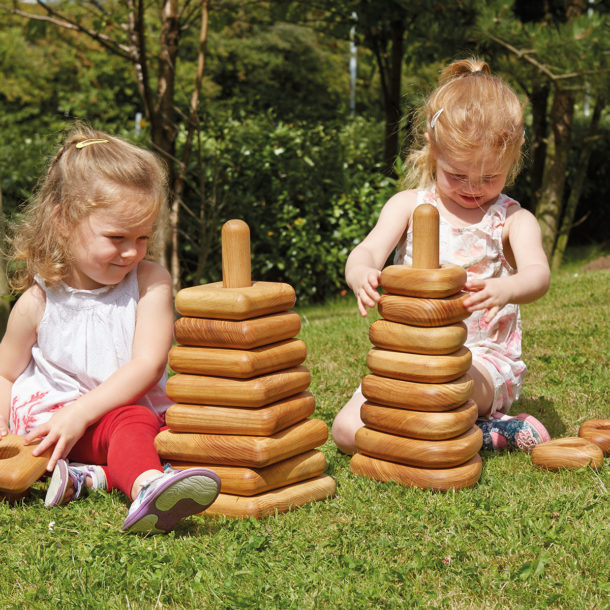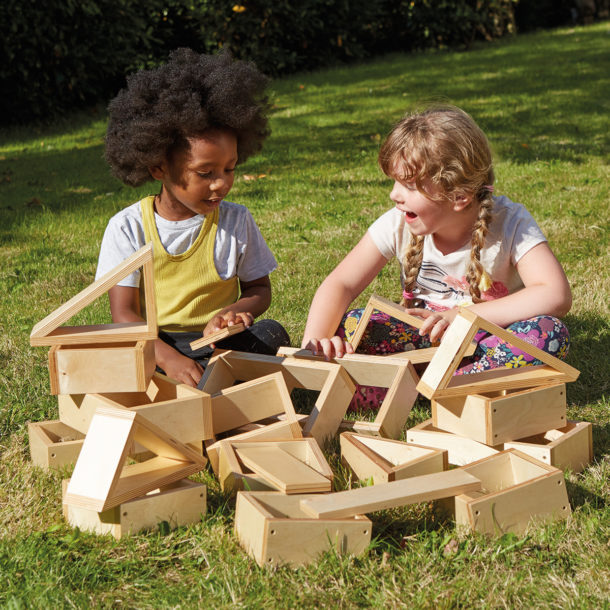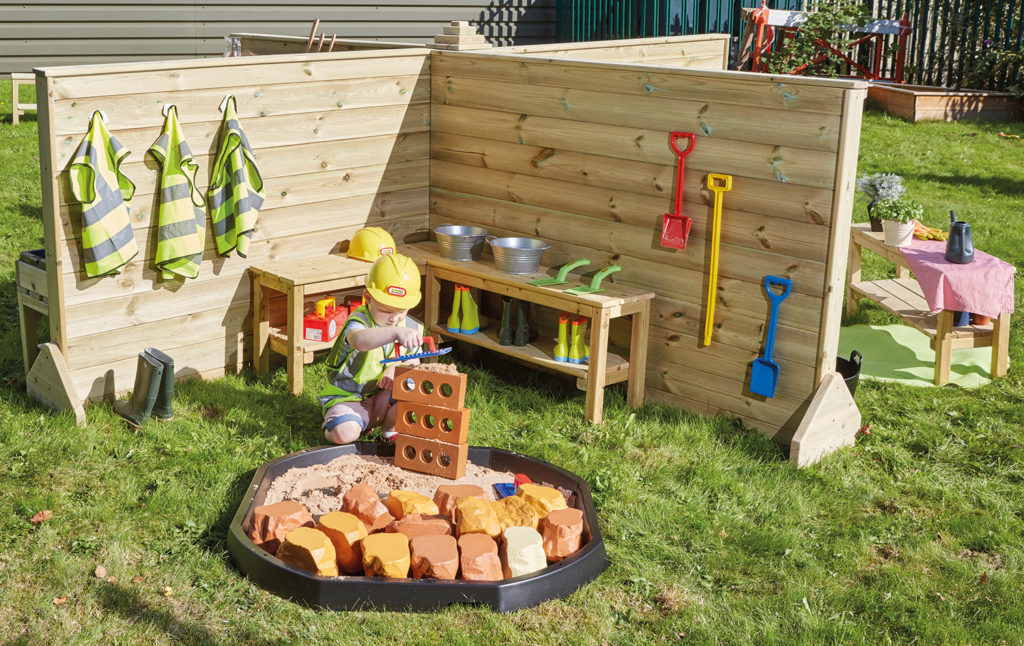Over a series of blogs I am looking at all of the main patterns of playful behaviour or ‘schema’:
Blog 1: Rotation and Trajectory
Blog 2: Enveloping and Orientation
Blog 3: Positioning and Connection
Blog 4: Transformation
Blog 5: Transportation
Here we will look at Positioning and Connection.
Positioning – Just the right place
When I started a new term at school I used to love getting a new little tin with maths equipment in. It had a compass, ruler, pencils, protractor, set-square and acute angle. All of the pieces fitted in a very satisfying way into the tin. Many of us gain a sense of satisfaction from arrangements that feel ‘just right’, whether it is the furniture in our rooms, the objects on our desk, or the tins in our cupboard. Children gain the same sense of satisfaction from exploring how things look and feel when they are positioned in different ways relative to each other. Can a big thing go on a small thing? Can a small thing go on a big thing? Objects can be stacked or lined up, placed in random or geometric positions. They can be positioned according to their material, size, shape or meaning.
We can support this kind of play by providing a rich variety of objects which are accessible and plentiful. Children also need protected spaces where others will not come charging through, knocking over objects and changing their positions. If a child has spent time and effort in carefully positioning, then try to value and respect their work either by leaving it for a while, displaying it in a safe place or recording it.
We also need to give them time and understanding, so they can line the bikes up in the right position, put the cuddly toys in exact rows or carefully place a stone on top of another stone.
You can find out about the significance of positioning stones in Diana Suskind’s Stonework Play.
Connection – Making the link
The very first relationship in a child’s life is often referred to as a ‘bond’ – the bond between baby and mother. The idea of objects which were separate and become joined is one children love to explore. When they hold tightly on to your finger they have made a single joined entity from two people. It is a great feature of human creativity to be able to find unexpected benefits from the bringing together of ideas, materials and people in creative and inventive ways.
There are many ways we can observe children creating their own connections. They may all join hands in a chain; they now have a three person-person that moves and is restricted in different ways to a single person. They may like to connect rail or road tracks in increasingly complex layouts, and then connect carriages together to push around the track.
Paper masking tape is a great material for children to use to connect as it tears easily and can be stuck and removed on to most things. They will want to try out connecting things that make up their everyday life – taping chairs together, connecting bikes and putting cuddly toys on leads.
Construction toys allow for different types of connection but many are all very small, so don’t forget to have a big game where everyone is connected to everyone else with a big ball of wool!
With thanks to Michael Follett BA Hons, PGCE, for writing this post. Michael is a former playworker, teacher and school improvement officer. He is currently director of OPAL and works with primary schools across the UK.


OPAL Outdoor Play and Learning CIC Ltd is a registered community interest company dedicated to improving the quality of play in primary schools and early years settings.





